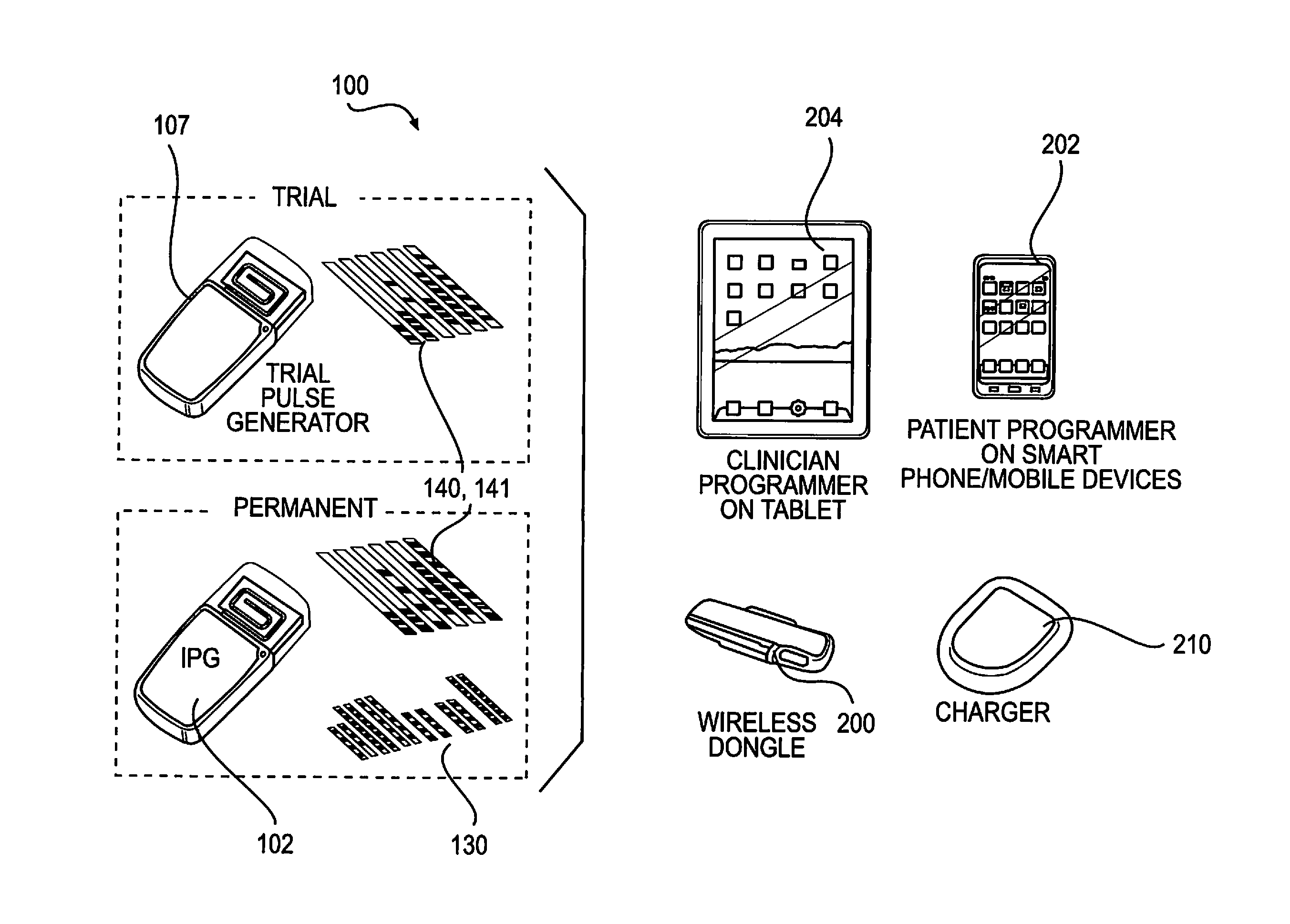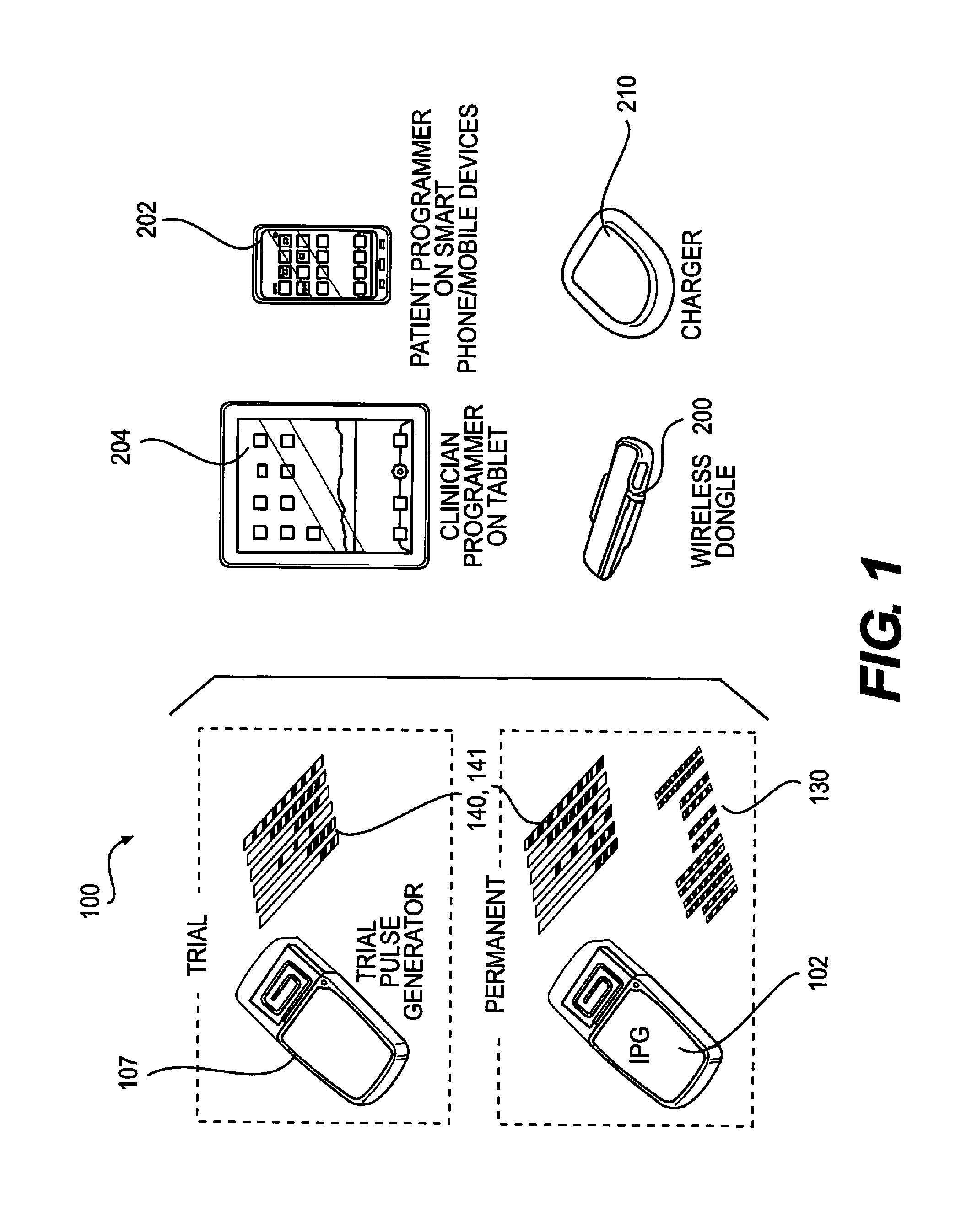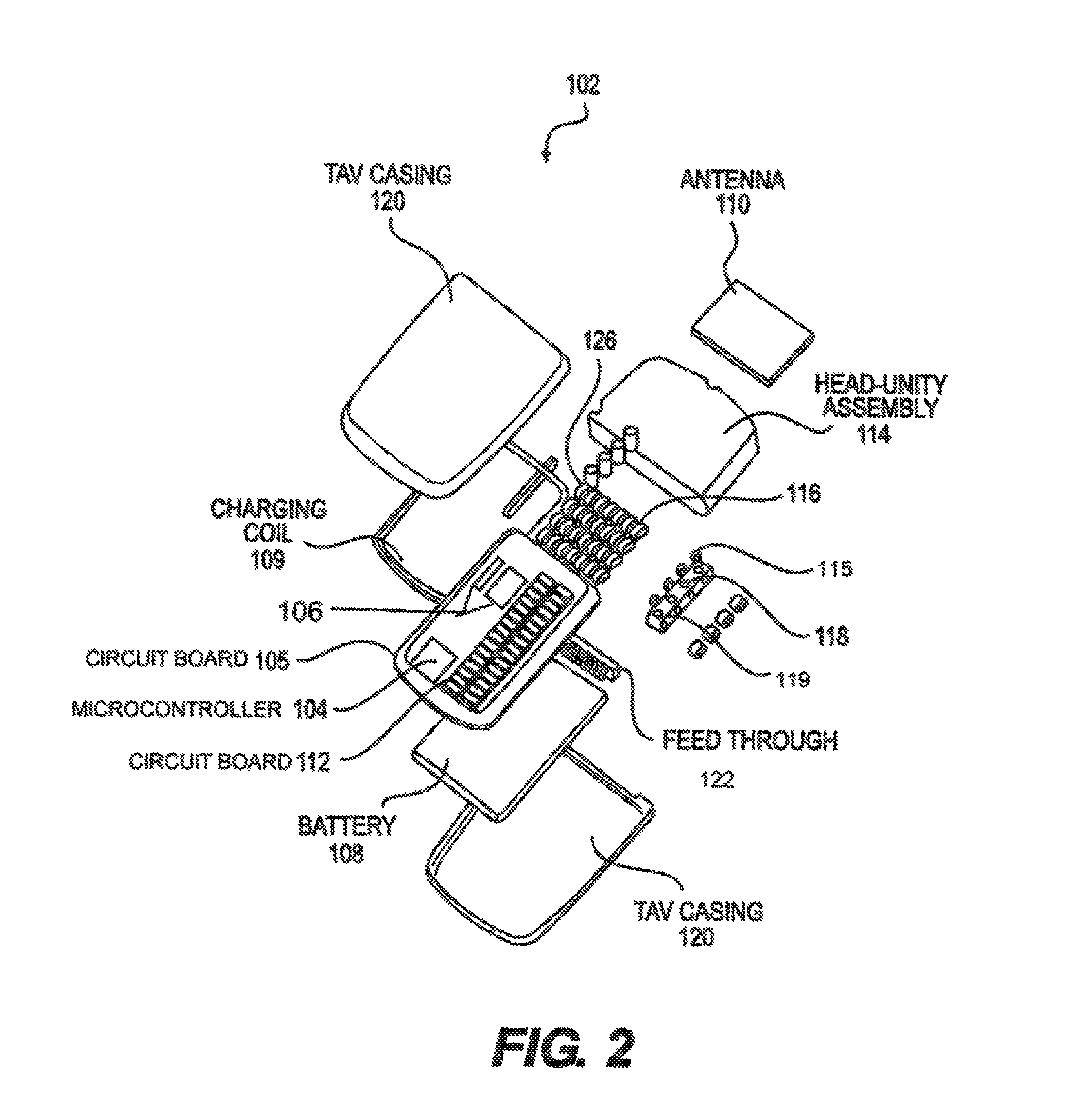Implantable pulse generator that generates spinal cord stimulation signals for a human body
a pulse generator and human body technology, applied in the field of pulse generators, can solve the problems of consuming too much power in the current generator circuit, limiting the full benefits of dorsal column stimulation, and not eliminating pain in the spinal cord, so as to save battery power
- Summary
- Abstract
- Description
- Claims
- Application Information
AI Technical Summary
Benefits of technology
Problems solved by technology
Method used
Image
Examples
Embodiment Construction
Implantable Pulse Generator (IPG)
[0041]FIG. 1 illustrates various components that can be included in a SCS system for the trial and the permanent installation periods. The spinal cord stimulator (SCS) 100 is an implantable device used to deliver electrical pulse therapy to the spinal cord in order to treat chronic pain. The implantable components of the system consist of an Implantable Pulse Generator (IPG) 102 and a multitude of stimulation electrodes 130. The IPG 102 is implanted subcutaneously, no more than 30 mm deep in an area that is comfortable for the patient while the stimulation electrodes 130 are implanted directly in the epidural space. The electrodes 130 are wired to the IPG 102 via leads 140, 141 which keep the stimulation pulses isolated from each other in order to deliver the correct therapy to each individual electrode 130.
[0042]The therapy delivered consists of electrical pulses with controlled current amplitude ranging from +12.7 to −12.7 mA (current range 0-25.4 ...
PUM
 Login to View More
Login to View More Abstract
Description
Claims
Application Information
 Login to View More
Login to View More - R&D
- Intellectual Property
- Life Sciences
- Materials
- Tech Scout
- Unparalleled Data Quality
- Higher Quality Content
- 60% Fewer Hallucinations
Browse by: Latest US Patents, China's latest patents, Technical Efficacy Thesaurus, Application Domain, Technology Topic, Popular Technical Reports.
© 2025 PatSnap. All rights reserved.Legal|Privacy policy|Modern Slavery Act Transparency Statement|Sitemap|About US| Contact US: help@patsnap.com



